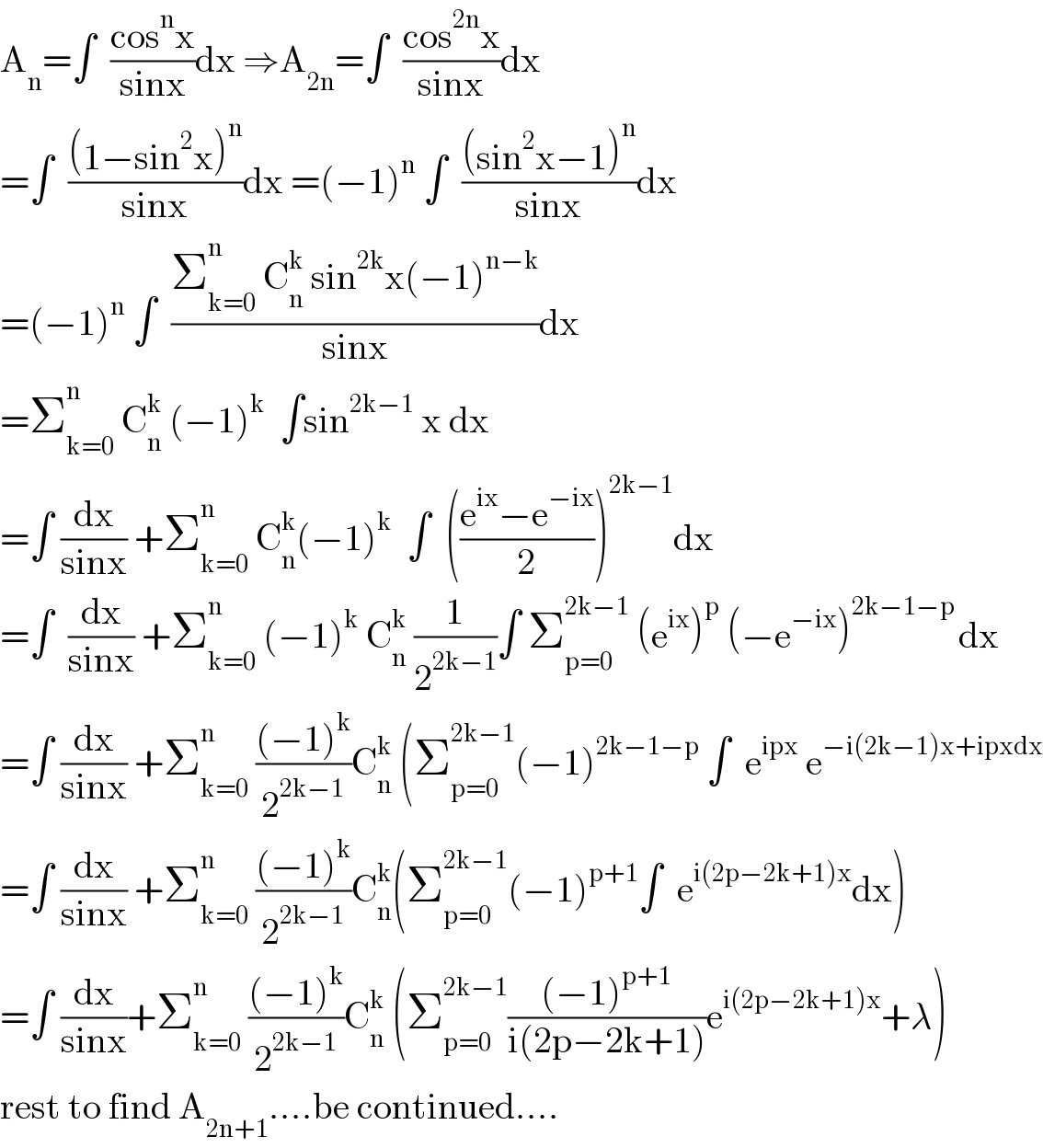
Question and Answers Forum
Question Number 148077 by mathdanisur last updated on 25/Jul/21

Answered by Olaf_Thorendsen last updated on 26/Jul/21

Commented by mathdanisur last updated on 25/Jul/21

Commented by puissant last updated on 26/Jul/21

Commented by Olaf_Thorendsen last updated on 26/Jul/21

Commented by puissant last updated on 26/Jul/21

Answered by mathmax by abdo last updated on 25/Jul/21

Commented by mathdanisur last updated on 25/Jul/21

Commented by mathmax by abdo last updated on 25/Jul/21

